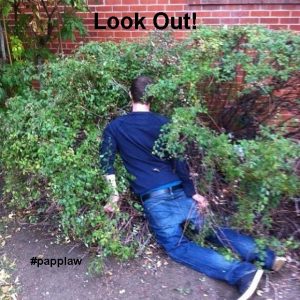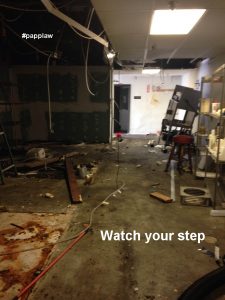 Injuries on Real Property
Injuries on Real Property
Have you been injured on someone’s property? Or, has someone been injured on your property?
///
California Civil Jury Instructions (CACI)
1000. Premises Liability—Essential Factual Elements
[Name of plaintiff] claims that [he/she] was harmed because of the way [name of defendant] managed [his/her/its] property. To establish this claim, [name of plaintiff] must prove all of the following:
1. That [name of defendant] [owned/leased/occupied/controlled] the property;
2. That [name of defendant] was negligent in the use or maintenance of the property;
3. That [name of plaintiff] was harmed; and
4. That [name of defendant]’s negligence was a substantial factor in causing [name of plaintiff]’s harm.
Slip and falls, trip and falls, falling objects, concealed holes and dangers – the list is long, but, absent the freak occurrence, the jury instructions are usually the same.
 Accidents on real property take many shapes and forms – trip and falls, slip and falls, holes, roots, cracks, broken items, obstructions, the list goes on and on. Premises liability covers private property (homes, vacant land) to public spaces (sidewalks, parks) to businesses open to the public – and, yes, sometimes even trespassers.. A landowner has a duty to keep his or her property “reasonably” safe – though not completely, absolutely safe. If there is a known dangerous condition on the property, the landowner has a duty to make it safe or warn of the condition.
Accidents on real property take many shapes and forms – trip and falls, slip and falls, holes, roots, cracks, broken items, obstructions, the list goes on and on. Premises liability covers private property (homes, vacant land) to public spaces (sidewalks, parks) to businesses open to the public – and, yes, sometimes even trespassers.. A landowner has a duty to keep his or her property “reasonably” safe – though not completely, absolutely safe. If there is a known dangerous condition on the property, the landowner has a duty to make it safe or warn of the condition.
California Civil Jury Instructions (CACI)
1001. Basic Duty of Care
A person who [owns/leases/occupies/controls] property is negligent if he or she fails to use reasonable care to keep the property in a reasonably safe condition. A person who [owns/leases/occupies/ controls] property must use reasonable care to discover any unsafe conditions and to repair, replace, or give adequate warning of anything that could be reasonably expected to harm others.
In deciding whether [name of defendant] used reasonable care, you may consider, among other factors, the following:
(a) The location of the property;
(b) The likelihood that someone would come on to the property in the same manner as [name of plaintiff] did;
(c) The likelihood of harm;
(d) The probable seriousness of such harm;
(e) Whether [name of defendant] knew or should have known of the condition that created the risk of harm;
(f) The difficulty of protecting against the risk of such harm; [and]
(g) The extent of [name of defendant]’s control over the condition that created the risk of harm; [and]
(h) [Other relevant factor(s).]
///
Click the link for a complete listing of the Judicial Council of California Civil Jury Instructions (CACI)
Eric Papp, Esq.
